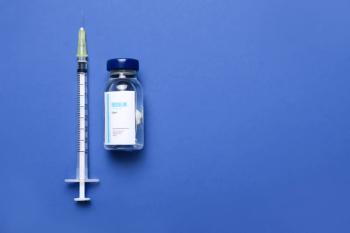
Why Pharmacists Need to Change Their Attitude
The opioid epidemic requires that all healthcare professionals-pharmacists included-re-examine how they approach pain patients.
There has been plenty of discussion regarding how pharmacists can curb the opioid epidemic, but one often-overlooked factor needs to be addressed: We need to make a fundamental shift in our attitude towards patients who are being affected by this crisis.
The
Changing an Attitude
When consulting our patients with whom we suspect an opioid use disorder, we need to understand that they commonly want these medications to just feel “normal,” not get high or to sell. The patient should not be made to feel that they are doing something bad or are just “drug addicts.” Data from
(NSDUH) in 2016 found that 63.6% of those who developed an opioid usage disorder used
This epidemic is not the result of a character flaw, but often a result of those suffering from a drug use disorder caused by over-marketing by pharmaceutical companies, as well as over prescribing and dispensing. As pharmacists, we must remember that this patient may be in actual physical pain or is in fear of painful withdrawal symptoms. If a patient suspects that a pharmacist sees them as flawed in some way, they may turn away without accepting help. Consulting with this is mind leads to a more thoughtful conversation that can build a relationship.
Talking with Patients
No matter how difficult it is to start this conversation, it is essential that we convey our genuine concern for the patient. The following are possible examples of initiating the conversation:
- “I would like to work with you to maximize your safety and wellbeing.”
- “Are these medications helping to control your pain?”
- “Are you experiencing any side effects from these medications?”
- “Taking opioids over a long period of time can cause an accumulation in your body that can lead to an adverse reaction in the future.”
- “My concern is that I do not want you or anyone else to experience any bad reactions.”
Avoid the word “overdose.” Patients may begin to tune out the conversation believing that “overdose” is meant for drug abusers-not themselves, who are taking medications as instructed.
Additional Safeguards
It is important to engage the prescribing physician. This will help you stay on the same page in understanding the patient’s unique situation. Prescribing naloxone is one example. The
Another safeguard is to recommend locking up opioid medications at home and to properly dispose of unneeded medications. The NSDUH showed that 40.6 of adults who misuse opioids obtained them from friends or family members. By securely storing and disposing of these dangerous medications, one source of potential abuse can be eliminated.
An appropriate perspective with discussions that presents all options of treatment, including naloxone, possible drug interactions, responsible storage, and proper disposal, will enable us pharmacists to be able to curb the opioid epidemic.
Joseph L Lee is a 2019 PharmD/MPH candidate at Touro University California, Vallejo, CA. I would like to acknowledge Aglaia Panos, PharmD for her assistance in writing this article. Contact me at joseph.lee2@tu.edu
Newsletter
Pharmacy practice is always changing. Stay ahead of the curve with the Drug Topics newsletter and get the latest drug information, industry trends, and patient care tips.

















































































































